The Sandakphu Trek is a 7-day trek in West Bengal, India, that takes trekkers through the enchanting landscape of the region. The trek offers spectacular views of the surrounding mountains, including some of the highest peaks in the world, such as Kanchenjunga and Everest.
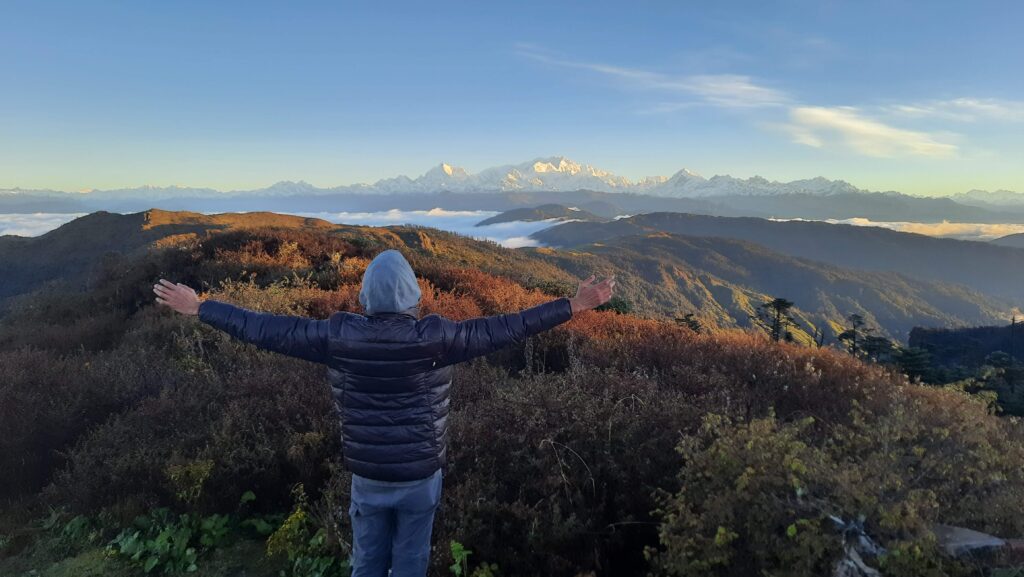
The Sandakphu Trek is unique in every way. It gives a stunning sight of four of the highest peaks in the world. However, it is also a journey where the natural world and culture coexist. Greater still is the “Sleeping Buddha” to your right. Eerie similarities exist between the massif and a sleeping human shape. The most notable peak in this oddly formed massif is Kanchenjunga, the third-highest mountain in the world. A view of these three magnificent peaks combined is a once-in-a-lifetime opportunity. The sleeping Buddha greets you as you rise from our Sabalgram campground. Trekkers frequently cry when they see the scenery.
The ideal location to see sunrises and sunsets is the Sandakphu hike. In addition, hikers should be prepared for windy circumstances and huddle with a cup of soup beside a brazier. While hiking through forests and meadows, the walk also provides the chance to learn about local legends.
Of course, Singalila National Park is popular among our trekkers. There are some of the densest bamboo and rhododendron woods in the world. These woodlands are breathtaking. Walking beneath a canopy of bamboo trees is a unique sensation. The tall bamboo stalks soar above, forming a natural canopy that diffuses sunlight into a delicate green radiance. The dense and crowded bamboo stalks give off the impression of entering a tunnel and entering a mysterious, mystical realm.
A very magnificent moment is created each spring when rhododendrons blossom, covering the slope in dazzling blooms of pink, crimson, scarlet, and white flowers. While hiking through these woodlands, you could see red pandas. On this walk, it’s unlikely but not impossible to see a Himalayan black bear, a red panda, or a clouded leopard. We also anticipate the Indo-Nepali culture of the journey. Our hike route often enters and exits Nepal. At some of our sites, our sleeping tents are in India, while our kitchen tents are in Nepal.
How do I reach Srikhola or Sepi?
A typical trip in a hill station is the journey from Bagdogra Airport/NJP Railway Station to Sepi. The roads go past quaint hillside towns and the well-known Darjeeling tea gardens. Enjoy the scenery as you begin to ascend from your taxi. I would advise arriving a few days early and taking advantage of your stay in Darjelling, as I did. You may take a shared cab from Darjelling to Manyabanjan, but I decided to visit the village of Kopidhara instead, where I had lunch.
Here, you may enjoy some real momos (dumplings) and thukpa (noodle soup). Nearly every other restaurant along this road serves these meals. You may find more traditional delicacies like Gandruk, Churpi (Yak Cheese), Ningro, and the well-known chili Dalle Khursani at a few teahouses. After lunch, the taxi continues uphill to Srikhola, or Sepi. You’ll pass via Sukhiapokhri, Dhotrey, and Rimbik on the route. These are all quite lovely towns that fit in with the peaceful surroundings, remote from the busy city life. These places are well connected and an ideal place if you want to work remotely.
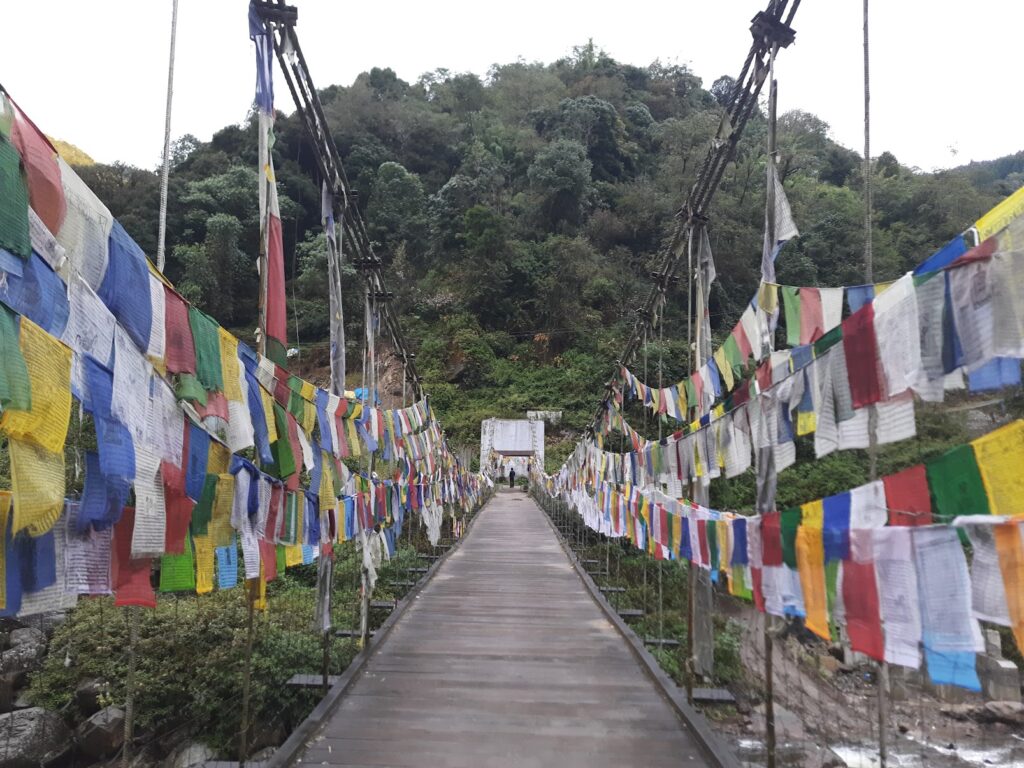
Srikhola is a site with several areas that are covered in tree groves, moss-covered rock walls, and ferns that grow out of every crack and crevice.
Human habitation bestows high and low on the landscape as the Srikhola spring runs through the community. There is a suspension bridge to cross, and the area is beautiful enough to be included on postcards for tourists. If this doesn’t give the location enough personality, several locations, including the trekker’s hut building, are said to be haunted.
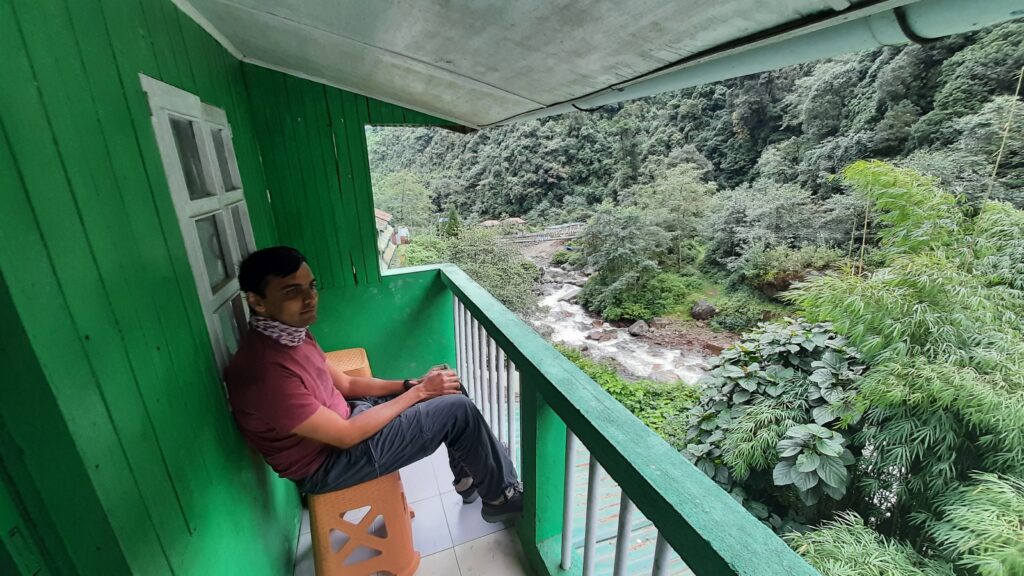
On this day, if you arrive early, explore Srikhola and take some time to relax by the creek and the suspension bridge. The feeling of strolling on this suspension bridge is really pleasant, with the prayer flags flapping in the breeze. Take pleasure in the little tremors as you pass this bridge. Learn from your guide about the five components of these prayer flags. Just beyond the suspension bridge, which serves as both a marker and the beginning of the real hike, sits Srikhola. Rest well in the cottage beside the stream, where you may hear the sound of the water flowing all night.
Trek from Srikhola to Samanden
It’s time to lace up your boots and set off on your adventure after a restful night at the riverside cottage in Srikhola. You may get some exercise for the day by walking approximately 3.5 kilometers to Ramam. Up until Ramam, there is a manmade road that meanders past a number of homes and step-cut fields on each side of the road. However, as you go along the road, these start to diminish. You can locate a waterfall as you climb the slope. Keep in mind that landslides frequently occur in this area during the monsoon.
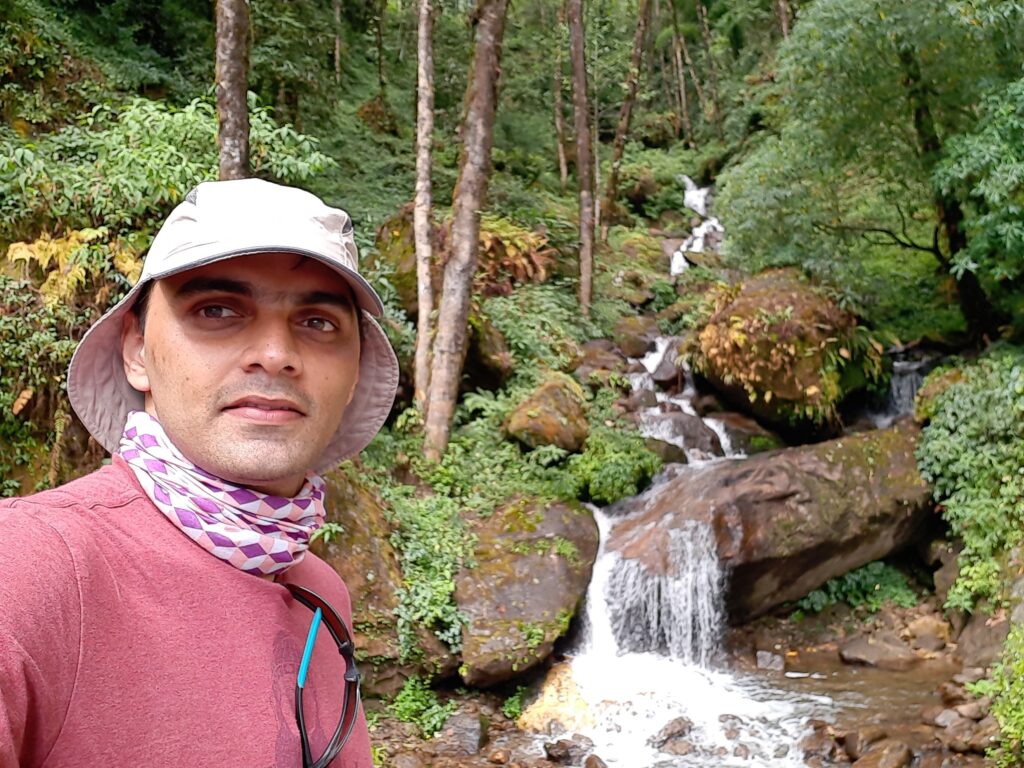
A short while further, you arrive at a tiny clearing of the government school grounds, surrounded by dense pine trees that foreshadow the remainder of the path. You enter the woodlands just across the clearing, and an emerald glow envelopes you right away. You entirely travel through a deep forest over the next several kilometers until you get to a bridge. There are stone benches along the route that are inscribed with the names of the townspeople who have since passed away. The wonderful idea behind this is that by giving trail users a place to rest, these individuals who have passed away continue to serve the community.
Samanden, the mini Swiss
The path then gradually ascends until you reach Samanden, a sizable open area with a gently sloping landscape scattered with farm fields and wooden cottages. This location is just as picturesque as the Swiss Alps communities. Large pine trees surround the huts, which have Victorian-style architecture. You spend the night in one of these huts and are shown really kind hospitality. Before going to bed, take in the tranquility and simplicity of this location in the middle of a field of corn, wishing you had a modest hut in this adorable little community.
We toured Samanden hamlet the following morning in the early hours before hiking another kilometer to Gorkey, another adjacent village. Another lovely campground where you can spend the night is this one. On the way, in the heart of the community, there is a little waterfall. The place is well known for stargazing, which is ideal if you are into astrophotography.
Trek from Samanden to Molley
The whole way from Samanden to Molley is a steep climb, so today is going to be hard. Today is the day you work out the hardest and for the longest time. The beautiful path, on the other hand, makes you feel better and encourages you to keep going. Today is the day to find out if there is magic in the woods. Today, you will hike through three different types of wood, each different from the others.
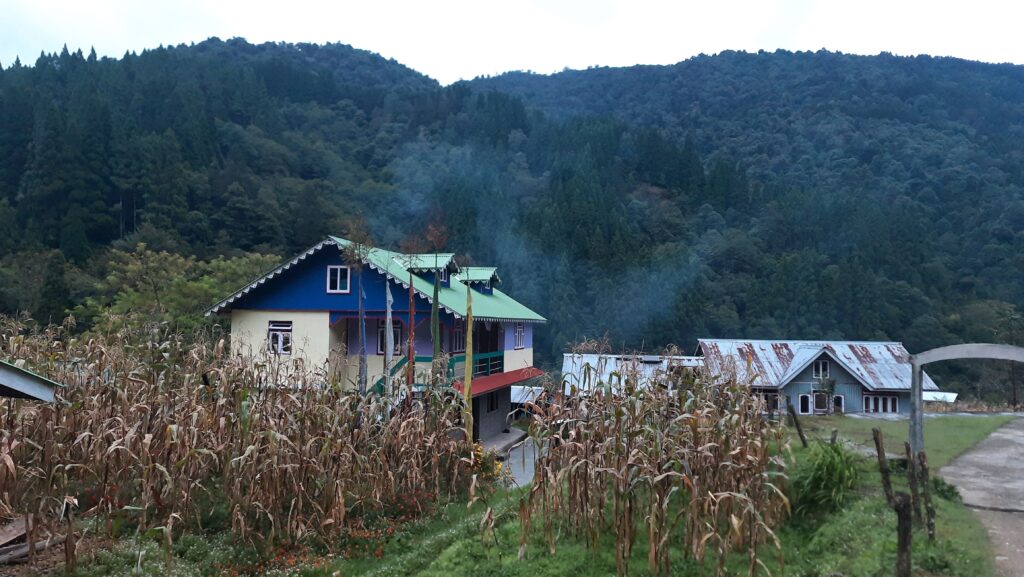
You go up almost 3,000 feet. In mountain terms, that’s a big gain in elevation. Besides that, there are no water sources along the way. The only way to get to Molley is through a thick bush. To begin the trail, you will go through a part of the forest that is mostly made up of pine and oak trees. The green oak starts out first, and as you go higher, it gives way to the golden oak. As a result of being lower than most woods, there is a good chance that you will come across some rare Himalayan wildlife.
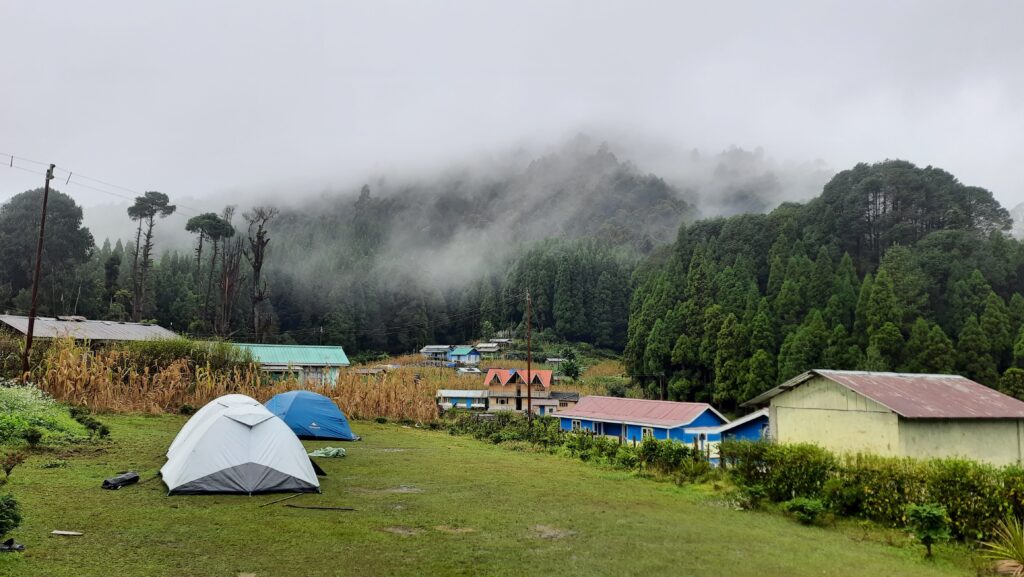
Asian black bears are known to live in these woods, and some hikers have even gotten very close to them. The moon-shaped patch of white hair on their chest makes them easy to spot. They are usually not mean, and if you get too close, they will move out of the way.
If you ever see a mother bear with her kids, you should stay still and keep your distance, or slowly back away until she goes her way. There are also other wild animals in the area, but you are less likely to see them as you go higher up. In addition to animals, these woods are home to many types of birds.
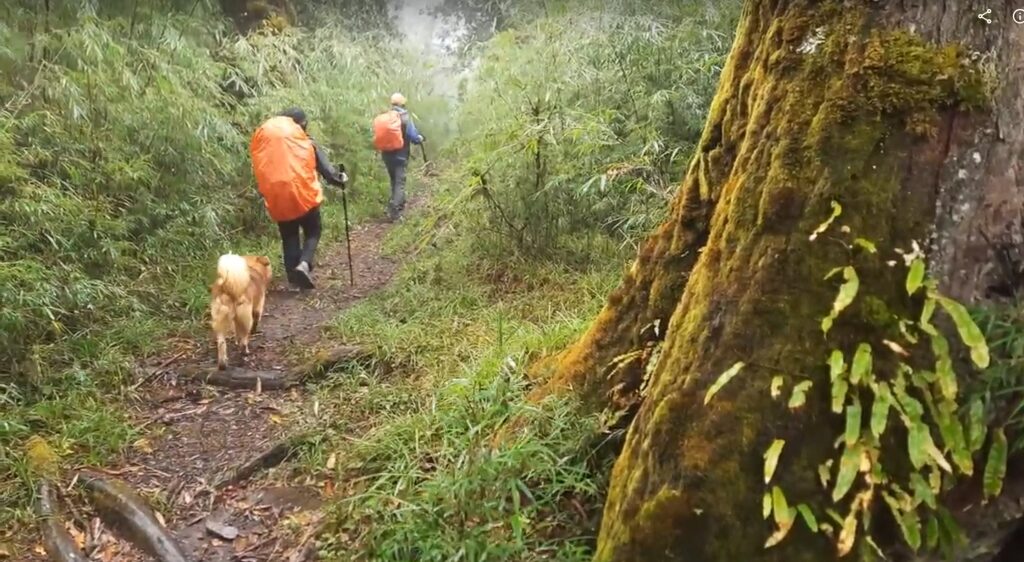
As you go further, you’ll also go through thick bamboo woods. On either side of the path are groves of bamboo. There are places where the bamboo forest is so thick that you can only see a few meters into the bush.
From the ground up, all you can see are green sticks that arch over the path. You might see the shyest animal that lives only in the Himalayas, the Red Panda, in these woods if you’re lucky. The red panda is rare and hard to find. They look for food in these woods because bamboo shoots are mostly what they eat. If they are nearby, you need to keep your eyes open and walk as quietly as possible so you don’t scare them away. Being able to see them in their natural environment is one of the best things you can do and then take back with you.
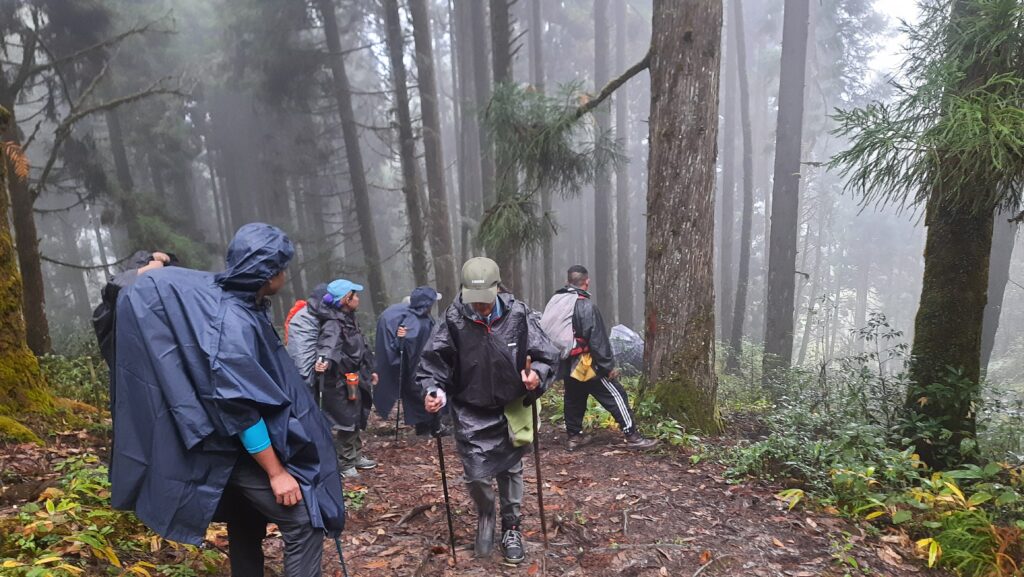
As you walk through the bush, you can see a lot of different-colored mushrooms and plants. You’ll need 7–8 people just to go around the trees’ stems, which are so tall and wide.
After a few hours, the forest changes into one with lots of bamboo trees. Even here, the forest is so full of trees that the sun barely reaches the ground. After a few paths that go up and down hills, the rhododendron belt starts.
You finally come out of the forest after walking through it all day. You will need to walk another 200 meters to get to your camping spot near Molley. Where you left off in the bush, the camping at Molley is very different from it. It has no plants at all and is where the track starts in the real mountain fields.
You can get some snacks at Molley’s bush hut. You have a full dinner and then sleep in tents here for the night or in the government guest house. There will be times when you think back on the exciting adventure you had during the day. To see the alpenglow on Kanchenjunga, walk 500 meters toward Sabargram from Molley.
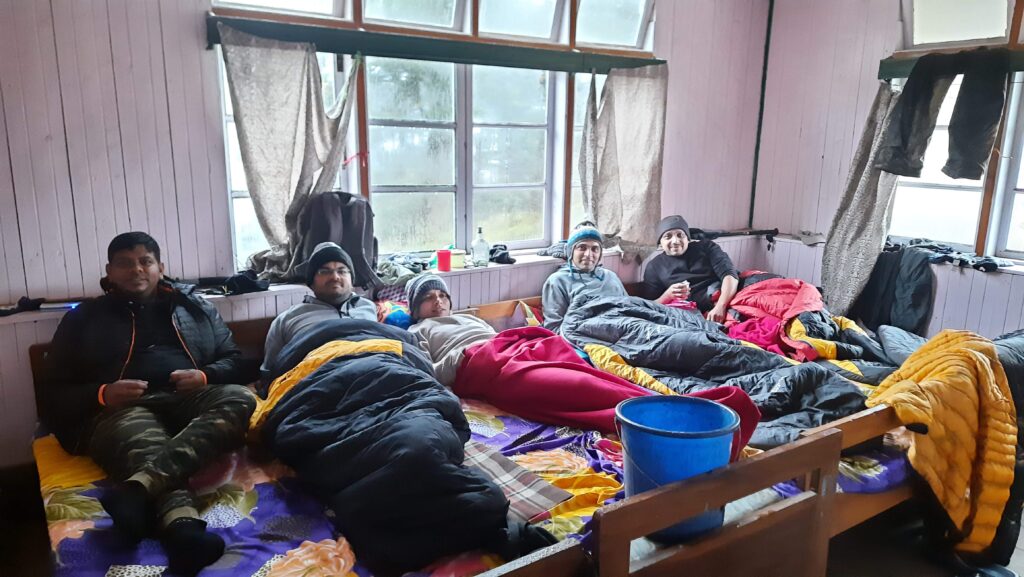
Trek from Molley to Sabargram or Ahal Camp
Today you will hike above the trees and reach the ridge. If the weather is good, you will be able to see the world’s four largest peaks. From Molley to Phalut, the road is 6 km long and goes straight. On the left, you can almost touch Nepal. It will take you about two and a half hours to finish this. Over the course of about 15 minutes, there are a number of gentle descents, high ascents, and level field walks. After this, you’ll walk across a flat field for half a kilometer and then climb steeply for one kilometer. You can get around this by cutting corners.
The locals call the hikers’ hut Phalut Bungla. Keep an eye out for it as you go. From here, it will take about thirty minutes of steady climbing to get to Phalut.
The trail has one of the best views of the “Sleeping Buddha,” which is the group of hills around Kanchenjunga called the Kanchenjunga range. From the left, you can see Kumbhakarna, Kanchenjunga, and Simvo in the distance. South Kabru, North Kabru, Kabru Forked, Goecha, and the hill of Pandim just ahead of Simvo are all below Kanchenjunga.
The Goecha La is the valley between the ridges of Goecha and Pandim. It is a famous and beautiful walk in Sikkim. It’s amazing to see how these mountains, which were made billions of years ago, look almost exactly like the awakened one himself, Buddha, while he is sleeping.
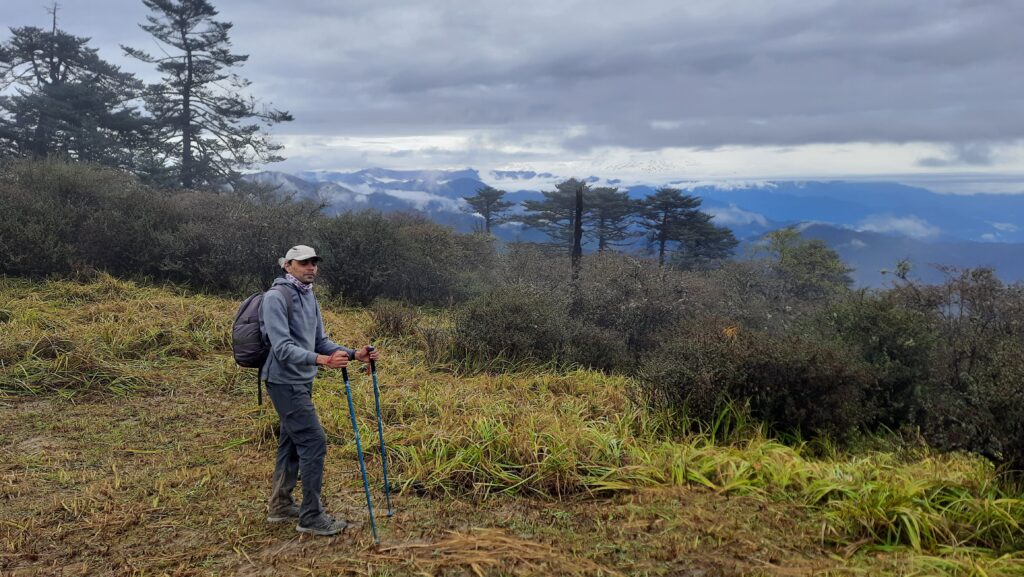
When you see the “Sleeping Buddha” for the first time, you feel like you’re in a spiritual dream. It leaves an impression on your mind and stays there. When you get to Phalut, the viewpoint is on the hill to your left. Get there early to get a great view of all the mountains and hills in the area. You may camp at Sabargram or continue further and camp at Ahal or Aal Camp, where there is a small shop and a view point.
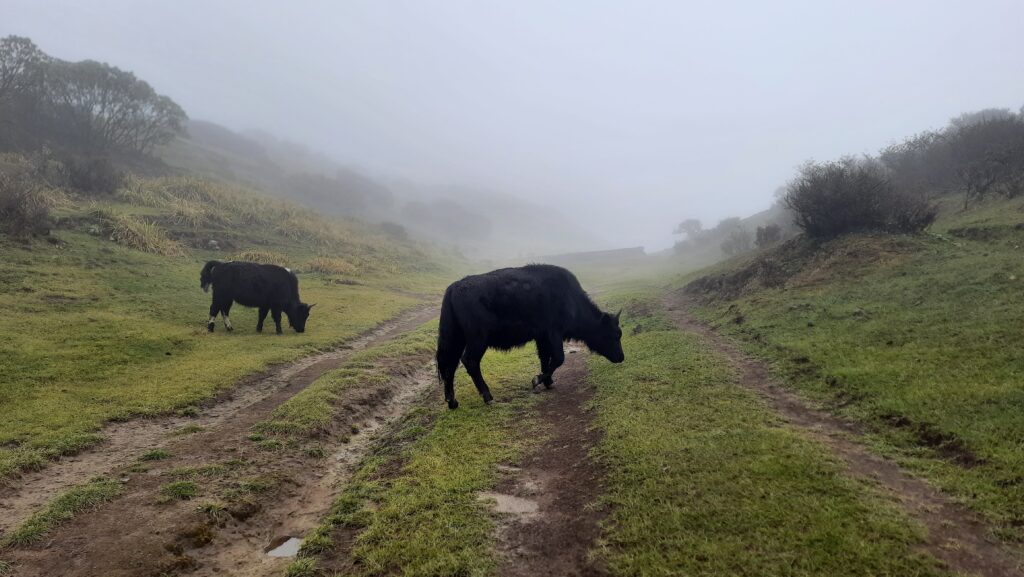
Trek from Sabargram or Aal camp to Sandakphu
In the event that you slept at Sabargram camp instead of Aal camp and rested there, you will wake up to a bright and fresh morning. Your legs might be tired from all the worry of the last two days. At Sabargram, however, you should not miss the morning because you can see the sun rise above the clouds.
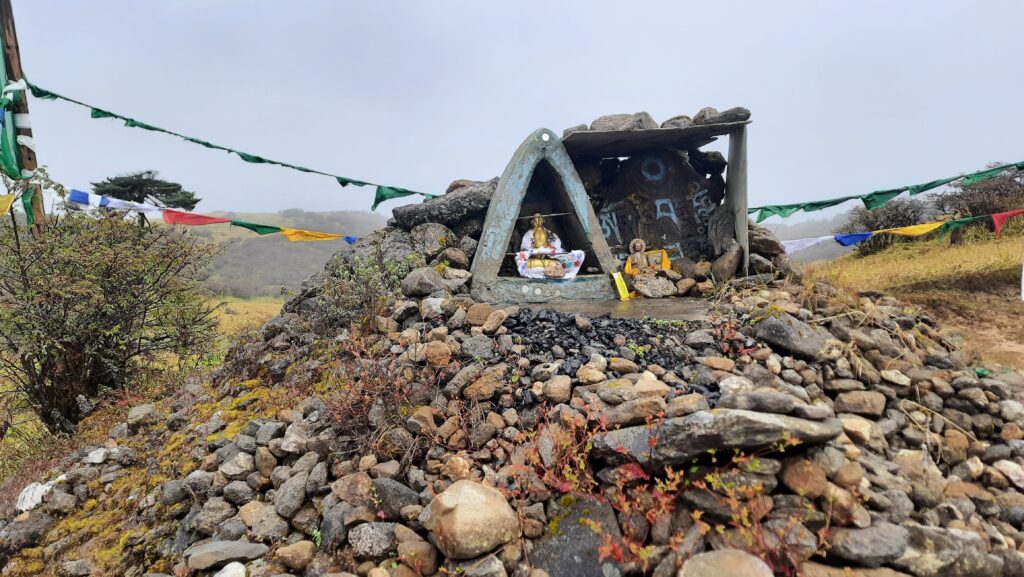
You’ll be ready to go after breakfast and morning tea. As you get ready for the trip today, the crisp, cold morning air fills your breath. The day will be long, but not too stressful. This day’s trip starts where the last one did, but instead of going toward Phalut, you walk away from it. The trail goes all the way to the top of Sandakphu along the Singalila mountain, which is right on the border between India and Nepal. There are a number of worn-out roads that cross the land. They all look pretty much the same. The path that leads to Sandakphu is the clearest and most reasonable.
When it comes to unique views, the tracks are the best part of this trip. There are tall pine trees all over the landscape. Some of them look like they’ve been cursed and mummified, with pointy tips and few or no branches. Some appear to have received lightning strikes and internal burns. In April and May, the path has a huge number of rhododendrons that are in full bloom. Local cow farmers built and occupied small wooden huts along the path. They add to the peacefulness of the area. The Buddha, who is said to sleep forever, is in the background of the scene. It feels like you’re walking through a picture with depth.
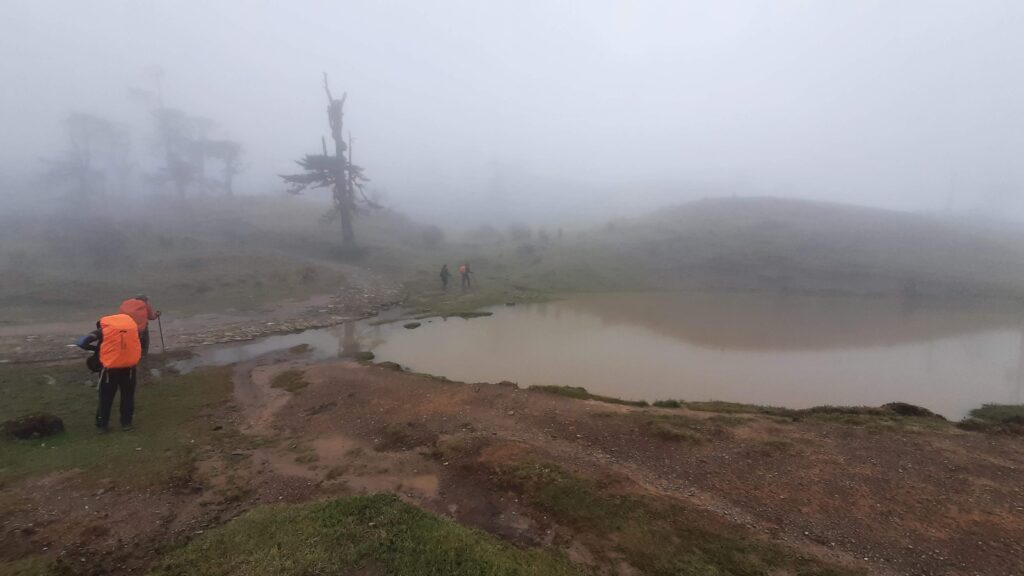
You will reach a small pond called Kaly Pokhry about halfway through the trail. There is also a trekker’s hut there. You’ll eat lunch here, which is called Thokum. This is not the same as Kali Pokhri, though, which is a different way to get to Sandakphu from Manebhanjan. You can take a break here for a while before going on. Some paths go into Nepal. There are also lots of rhodo bushes along the path. In April and May, they bloom in white and pink. Rhododendron red flowers are good for you, but rhododendron white and pink flowers are harmful and should not be eaten.
To keep things simple, remember that India is on the left side of the path you began going on. There is also a campsite at Aal. If you don’t want to go to Phalut, you can choose to stay at Aal Camp the day before. Early in the morning and late at night, the view from Aal Camp is breathtaking.
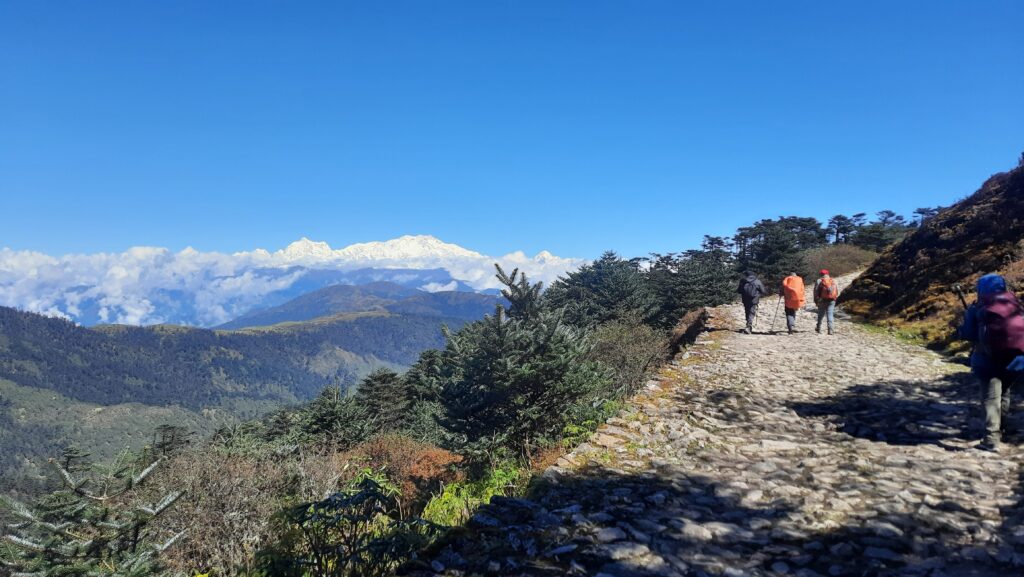
Aal is 1 km ahead of Sandakphu. It shouldn’t take more than 20 minutes to get here. The view point is on top of a small hill, just 100 meters before the group of houses and shelters at Sandakphu. Your camp is in Sandakphu. You need to see the sunset from the top of Sandakphu, so you can leave your bags at the camping spot and walk up to the peak. In the evening, the rising clouds from the hillsides make for a beautiful view. It gets very cold very quickly after dark. But go outside at night and look at the Milky Way and the other galaxies, nebulas, and planets that are close by.
Trek from Sandakphu or Aal camp to Gurdum
While the sun is rising, you get up early to enjoy stunning views of the surrounding area. If you want to see the mountaintops light up with the first rays of sunlight, you should be there. A crimson-gold color lights up the faraway hills, which is a beautiful sight. In the Himalayas, it’s one of the most beautiful natural sights you can see.
This spot’s 180-degree views of one of the world’s most sought-after landscapes are its main draw. In the west, you can see Himalayan peaks such as Makalu, Lhotse, Everest, Nuptse, Baruntse, Chamling, Chomo Lonzo, Machapuchare, and others in the Annapurna range. In the north, three sister peaks stand tall, and in front of you is the Sleeping Buddha. In the east, you can see Bhutan’s highest hills. Chomolhari, the country’s highest peak, stands out from the rest.
You keep going on the path after taking pictures and saving them on your memory cards and cameras. As a general rule, you should start going down on the left path at the split you see after the Sherpa Chalet Hotel and the Sunrise Hotel. You don’t have to go down the right road that leads to Kalipokhri. The trail goes over a hill and straight to Gurdum from here. Going up and down a few small hills with easy slopes takes about two hours. When you get to a small pond, you can eat lunch and take a break. You will see three stupas on your way to Gurdum. We will stop for a break at one of them.
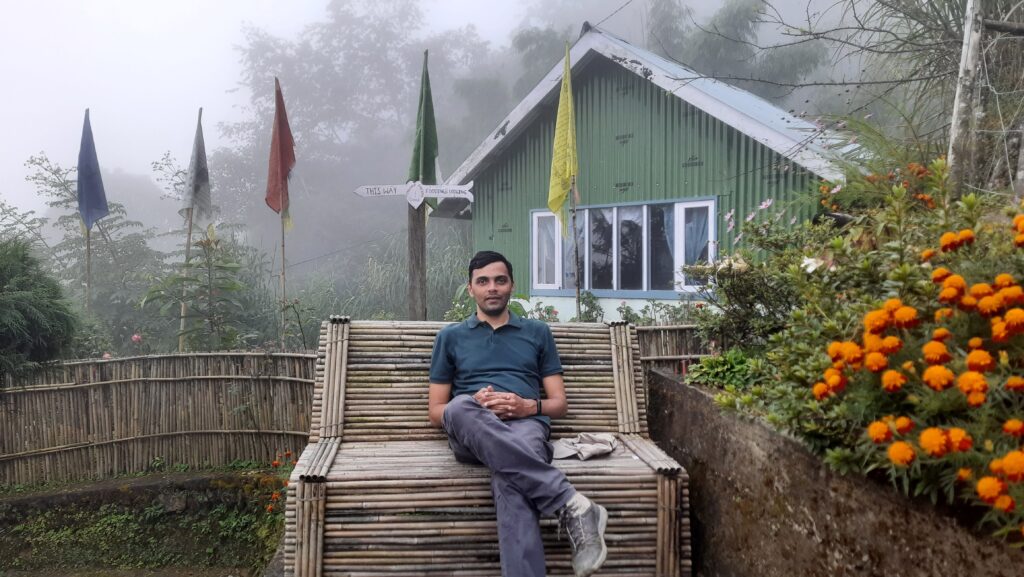
Next, you’ll go down all the way to Gurdum, which is about 3.5 to 4 km away and takes another 1.5 to 2 hours. As you get closer to Gurdum, you’ll start to see bamboo plants again, which will let you know that you’re almost there.
Gurdum is another beautiful village like Samanden. It has a wonderful rural charm and is a great place to finally relax and rest. The local Nepalese residents have set up a homestay for you to stay at. This is known as Gurdum Homestay. The hosts are friendly and warm, which makes our trekkers love staying at this homestay. While the service at these homestays isn’t the best, it’s better than a lot of commercial hotels.
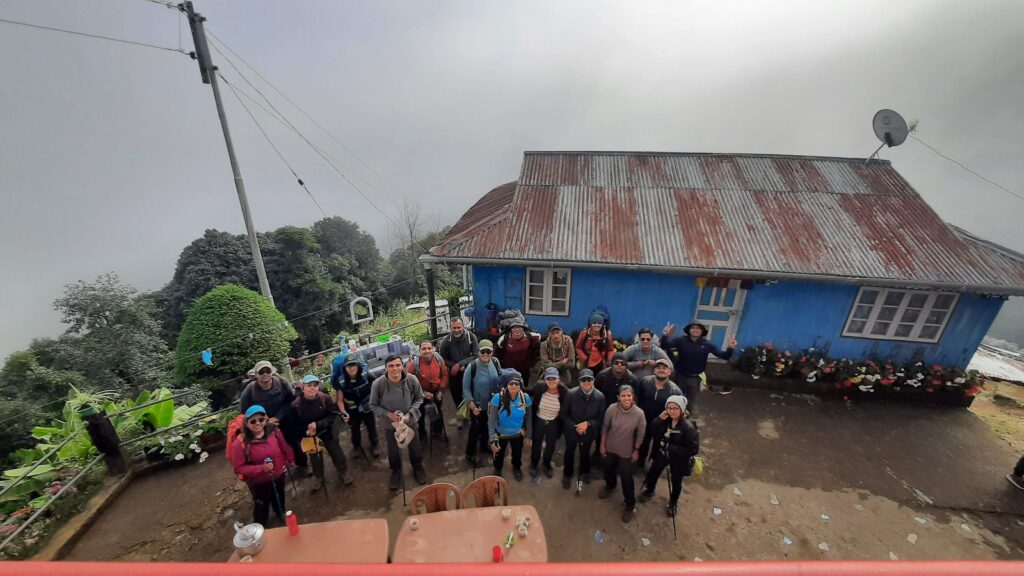
Should you be able to work from home, this is a great spot to connect because it has a strong 4G connection and beautiful views, which I’m sure you will enjoy.
Trek from Gurdum to Sepi or Srikhola
The following morning, there will be a full drop through the same kind of greenery as the second day of the trip. You started your walk in the same place where you are now. It takes about 4 km to get there, and you’ll get there around noon.
The closer you get to the Sepi suspension bridge, the more town homes you will see along the way. Different roads come together like streams that flow into one big river and lead to the Sepi or Srikhola Bridge. You eat lunch when you get there and then leave for Bagdogra airport or the NJP train station.
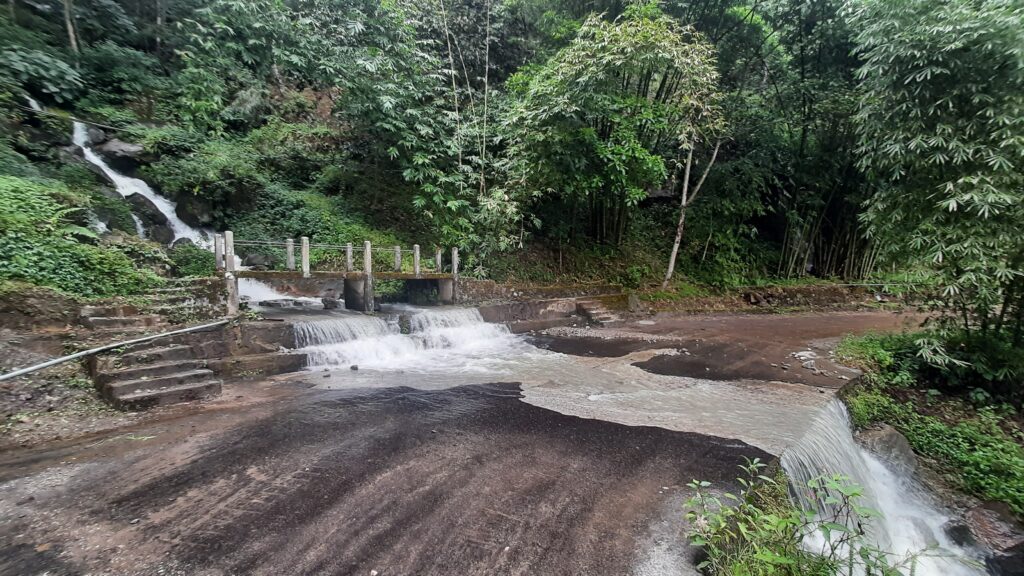
From the Himalayas to the India’s Southern Hill station, discover the 3 days of Top Secret Cycling in Munnar Tea Estate Hideaways.
How difficult is the Sandakphu Trek?
Depending on how hard you want it to be, the Sandakphu Trek is somewhere in the middle. From Sepi, which is 6,400 feet above sea level, you’ll climb to Sandakphu, which is 11,930 feet above sea level. Molley and Phalut are also about the same height. From Phalut, the trail goes down steeply to Samanden at 7,760 feet and then to Sepi at 6,400 feet, where the hike ends.
There aren’t any big rises or descents on the Sandakphu trek every day. The trip, on the other hand, makes you walk a lot every day. The walk takes about 7 to 8 hours every day, and some days it takes even longer. You walk more than 11 km most days of the trip. It takes a lot of strength to do this. During wins, when winds are strong and stay strong, this can get harder.
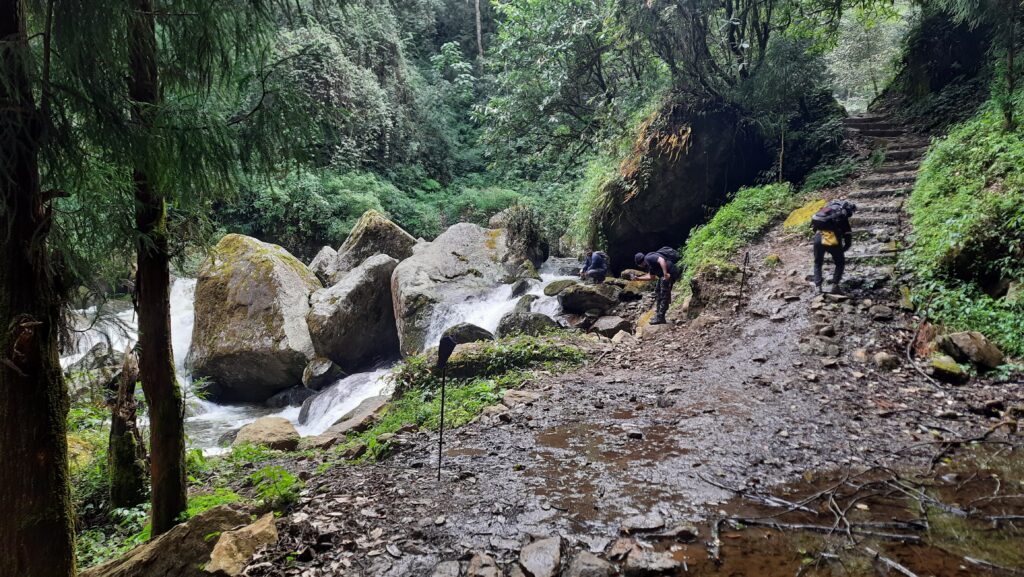
This is the right thing to do. You should make sure that your hiking shoes fit well because you will be on your feet for a long time and over long distances. Break them in at least two to three weeks before your trip. You also need good support for your ankles. That being said, make sure your shoes are soft and give your feet room to breathe.
The Sandakphu trek distance is 47 km, and it is a must-do trek for those who love trekking. The trek offers spectacular views of the surrounding mountains and an opportunity to explore the enchanting landscape of the region. The trek is moderately difficult and requires a certain level of fitness. It is best to go on the trek between October and April.
Even though this is a DIY trek, you can book your hiking tickets with some of the leading trek organizers, like Indiahikes, Trek the Himalayas, or YHAI. You can go solo until the basecamp and then with these groups. So, that was my experience of hiking to this place. Hope you enjoyed reading this blog post. Buy me a coffee to support my work or you can go to my store to buy some of my images. Also, do not forget to join my FriendZone by signing up for my newsletter. Consider subscribing to my YouTube channel.
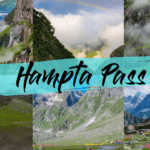
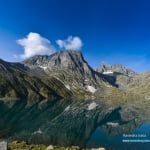
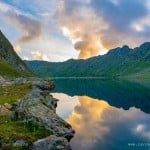
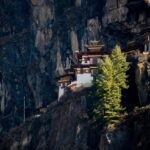
Hi,
Thank you for sharing such a captivating piece on Sandakphu! Your detailed account and vivid descriptions can transport anyone to the breathtaking landscapes of this enchanting destination. Reading your post felt like a virtual journey,
Your passion for the place shines through, making it evident that Sandakphu holds a special place in your heart.
The way you captured the essence of the trek, from the challenging ascent to the awe-inspiring views at the summit, was truly inspiring. It’s evident that Sandakphu is not just a destination; it’s an experience that leaves an indelible mark on those fortunate enough to embark on the journey.
Your photographs were a feast for the eyes, providing a visual feast that complemented your eloquent storytelling. Each image seemed to tell its own story, capturing the beauty of the landscapes, the charm of the local culture, and the camaraderie among fellow trekkers.
I appreciate the practical tips and insights you shared, creating a valuable resource for anyone considering a visit to Sandakphu. Your enthusiasm is contagious, and after reading your post,
Thanks again for sharing your wonderful experience! Looking forward to more travel tales from you.
Best regards,
Sandakphu Trek
I’m glad that you liked it. Consider sharing it with others. I have made YouTube videos of each of the trek days.
You may even “embed” my videos on your website.